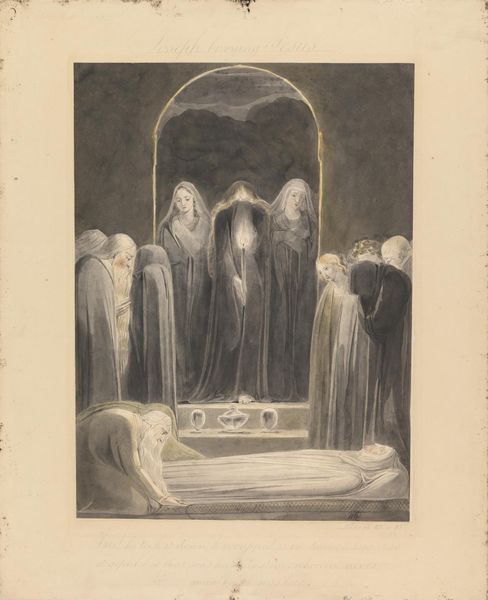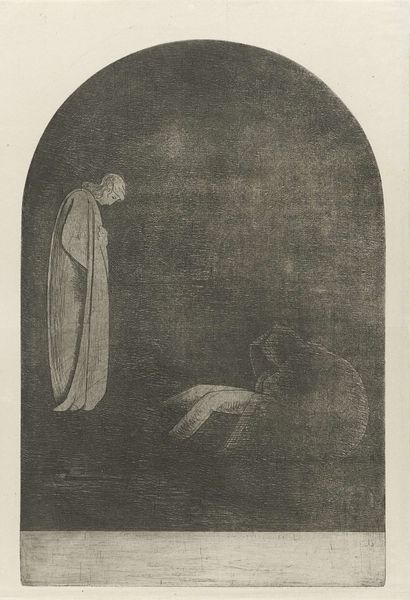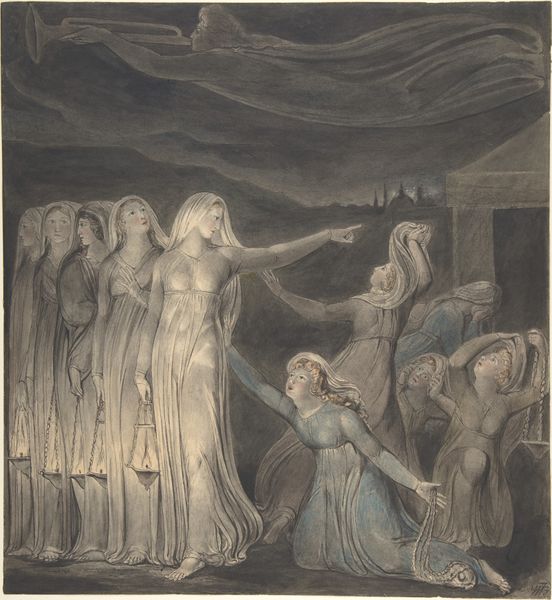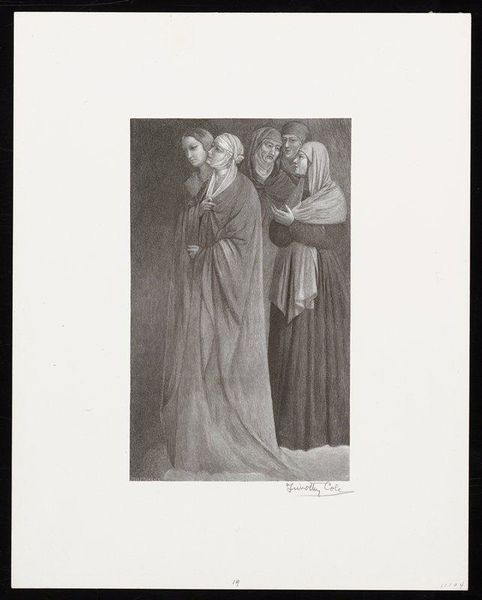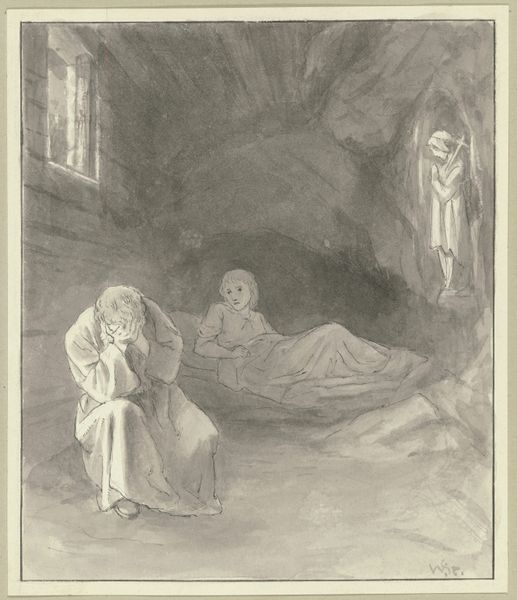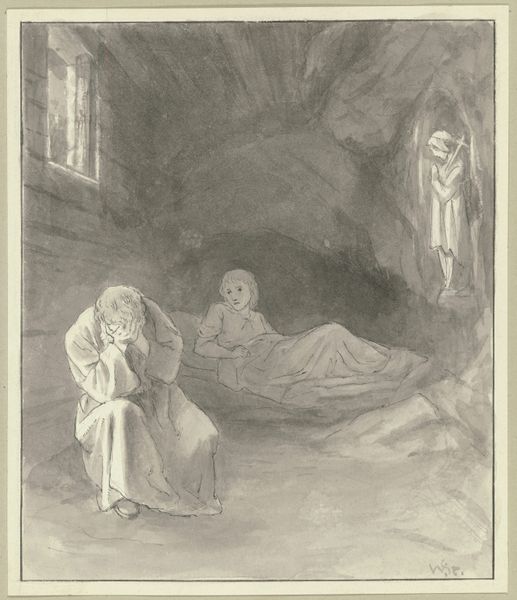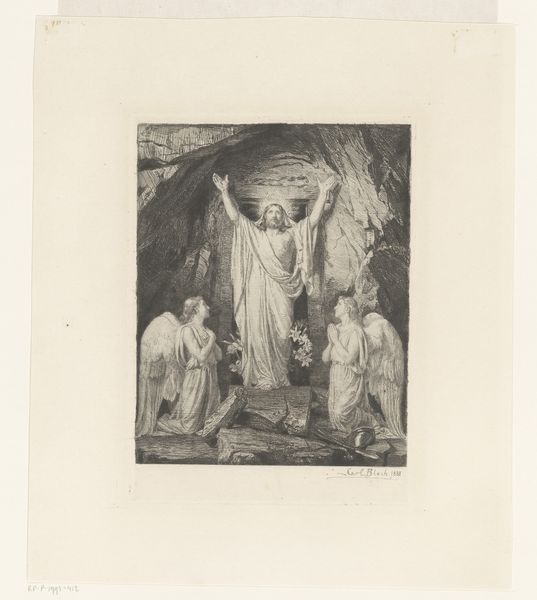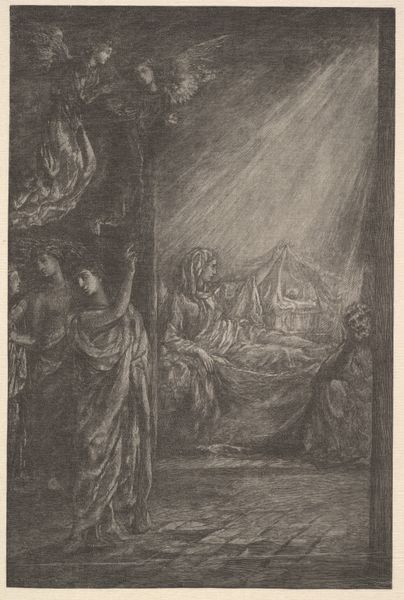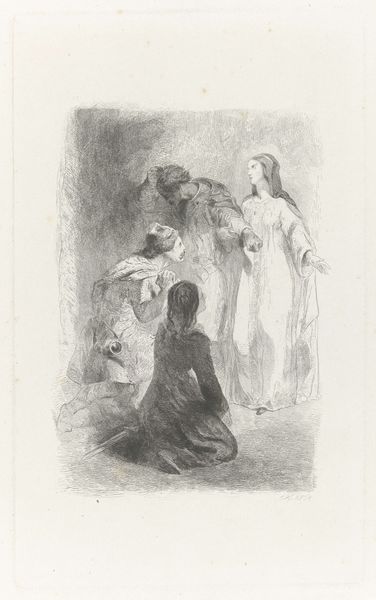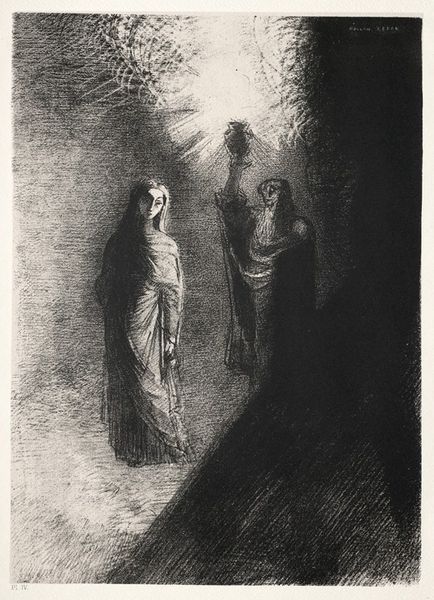
Dimensions: support: 417 x 310 mm
Copyright: NaN
Editor: Here we have William Blake’s "The Entombment," housed at the Tate. The somber tones and the figures shrouded in shadow evoke a feeling of profound grief. What symbols and meanings do you see woven into this piece? Curator: Consider the single candle flame; it's not merely illumination. What does light signify in the face of death, and how does it echo in other religious and secular contexts? It reflects hope, divinity, and the enduring spirit. Editor: That's insightful, I didn't initially focus on the candle as much. Curator: Note, also, Blake’s strategic use of veiled figures. What emotional weight do they carry, and how do they invite viewers into this moment of mourning and remembrance? Editor: I see it now! Thinking about the symbols really unlocks new ways of understanding.
Comments
Join the conversation
Join millions of artists and users on Artera today and experience the ultimate creative platform.
tate 7 months ago
⋮
The white card mount for this drawing was made after Blake’s death; the embossed stamp (top left) reads ‘Turnbull’s Crayon Board’, which was not made before 1846. The mount was probably made for descendants of Blake’s patron Thomas Butts. The watercolour is ‘drum-mounted’, that is, glued along its edges to a ‘window’ cut in the board. The smudges of gold and black paint on the mount suggest the drawing was later framed with verre églomisé: glass painted with black and gold lines on its inner face. This method, invented by the eighteenth-century French framer J-B Glomy, became popular in the mid-nineteenth century. Gallery label, September 2004
